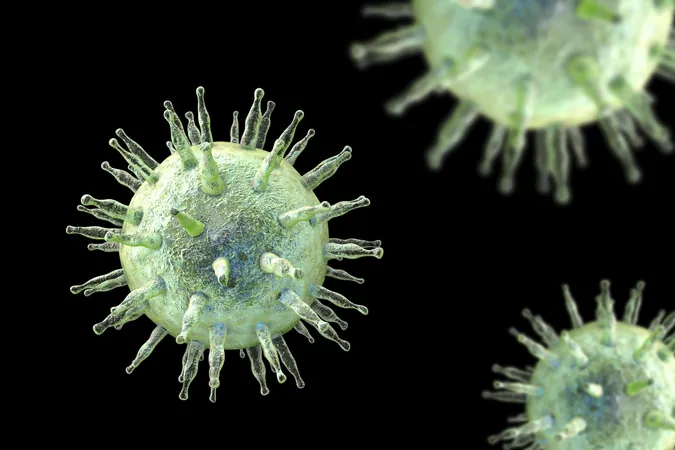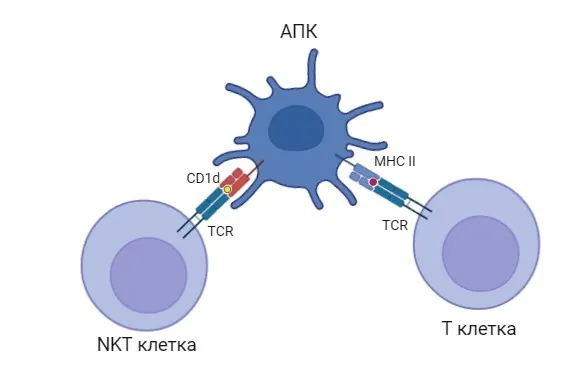
$49 Million Grant for Herpesvirus Vaccine Development: A Game Changer in Immunology
2024-09-26
Introduction
In a groundbreaking initiative, Dr. Erica Ollmann Saphire, a prominent structural biologist at the La Jolla Institute for Immunology (LJI), has secured a staggering $49 million to revolutionize the fight against herpesviruses. Her project, aptly named "America's SHIELD: Strategic Herpesvirus Immune Evasion and Latency Defense," aims to develop vaccines for these persistent viral threats, which are significant global health concerns.
Dr. Saphire's Research Background
Dr. Saphire’s extensive research has focused on viral molecular structures, significantly enhancing our understanding of how viruses like Ebola and Lassa operate. However, herpesviruses have remained a formidable challenge for researchers worldwide. "America's SHIELD is a historic opportunity to harness our collective scientific expertise to tackle the chronic health issues related to herpesviruses in ways that have never been attempted before," Saphire stated.
Collaborative Efforts
The project will involve a collaboration of distinguished experts from multiple institutions, including Houston Methodist, Emory University, and the Massachusetts Institute of Technology. Together, they will strategize on various aspects of herpesvirus vaccine development, a task that presents unique challenges.
Understanding Herpesviruses
Herpesviruses are particularly relentless. Unlike acute viral infections, such as Ebola or SARS-CoV-2, which are resolved once the virus is cleared from the body, herpesviruses can remain dormant for life, periodically reactivating to cause further infections. This latency complicates the vaccine landscape, as Dr. Saphire noted: "These are not vaccines against viruses you might catch anew; they are against viruses you already host."
Challenges in Vaccine Development
One of the biggest hurdles in developing effective herpesvirus vaccines is the viruses’ ability to evade the immune system. They have multiple surface proteins, enabling them to latch onto different cell types, making it difficult to create a single-target vaccine. “If your vaccine blocks one entry point, the virus will simply use another to get in,” Saphire explained.
Genetic Complexity of Herpesviruses
Moreover, the complexity of herpesviruses’ genetic material adds an additional layer of difficulty. With hundreds of genes at their disposal, these viruses have various strategies to evade immune detection and remain latent. "Designing an effective vaccine may require a multifaceted approach that targets multiple receptors and pathways," Saphire stressed.
Innovative Research Approaches
The SHIELD project aims to address these challenges through a more sophisticated, coordinated research approach, combining high-resolution imaging and genome analysis with artificial intelligence to predict vaccine efficacy against different strains. Dr. Saphire's team will work diligently to uncover the molecular structures of potential vaccine targets, paving the way for innovative treatments.
Leveraging Insights from CMV Screening
Furthermore, the project will leverage insights gained from universal newborn screening for cytomegalovirus (CMV) to help identify immune signatures, guiding vaccine development strategies tailored to specific populations. By analyzing immune responses in mothers and their infants, researchers hope to establish benchmarks for successful preventive measures.
Focus on Highly Infectious Herpesviruses
As part of its ambitious agenda, America's SHIELD will also focus on vaccinating against highly infectious herpesviruses such as Epstein-Barr virus (EBV), associated with various health issues including mononucleosis, multiple sclerosis, and certain types of cancer.
Economic Implications
The funding, while substantial, represents only a fraction of the economic burden caused by these viruses. The annual costs associated with CMV-related birth defects alone stand at $4 billion, underscoring the critical need for effective vaccines.
Conclusion
Dr. Saphire summarized the goal succinctly: “If you can mitigate $4 billion using $49 million, that’s a remarkable return on investment." The implications of this initiative stretch far beyond the laboratory, with the potential to significantly reduce the burden of disease on the American population and improve countless lives.
As research progresses, the scientific community remains optimistic that with concerted effort and innovative strategies, the elusive herpesviruses may soon meet their match. This comprehensive project could mark a turning point in our battle against these “crafty little buggers,” as Dr. Saphire aptly termed them, ushering in a new era of vaccine science.

 Brasil (PT)
Brasil (PT)
 Canada (EN)
Canada (EN)
 Chile (ES)
Chile (ES)
 España (ES)
España (ES)
 France (FR)
France (FR)
 Hong Kong (EN)
Hong Kong (EN)
 Italia (IT)
Italia (IT)
 日本 (JA)
日本 (JA)
 Magyarország (HU)
Magyarország (HU)
 Norge (NO)
Norge (NO)
 Polska (PL)
Polska (PL)
 Schweiz (DE)
Schweiz (DE)
 Singapore (EN)
Singapore (EN)
 Sverige (SV)
Sverige (SV)
 Suomi (FI)
Suomi (FI)
 Türkiye (TR)
Türkiye (TR)